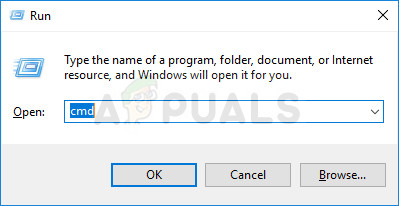Can Delete File Verify the Item s Location and Try Again
This error will appear when y'all are trying to access a certain file either to delete, rename, or open it. Logically speaking, if y'all can locate and view a file on your computer, you should also have clear access to information technology. Notwithstanding, this strange error occurs and you are unable to exercise annihilation with that file.

Sometimes this occurs with files created by third-political party services and it occurs because the file'southward extension is not properly defined. There are other obscure causes besides. Follow the several methods in this article to either delete the file successfully since that is what users most want to practice. Good luck!
Solution 1: Use the Following Command to Delete the Problematic File
This is one of the commands which can exist used to delete the problematic file or binder. Deleting it may be of import if it is linked to the software you uninstalled a while agone, especially if the file takes up a lot of space on the disk. Try this method only make sure you lot blazon in the correct path to the file instead of our placeholder.
- Search for "Command Prompt" either in the Start bill of fare or by clicking the search button right next to information technology, correct-click on information technology, and select the "Run every bit administrator" option. Y'all can too utilize the Windows Key + R key combination and type in "cmd" in the Run dialog box.

- Copy and paste the command below and make certain you tap the Enter cardinal on your keyboard afterward. Too, make sure to apply the correct path to the file including its name. Ten is the placeholder letter equally well, you should input the alphabetic character corresponding to the drive'south letter where the file is located.
rd /southward \\?\X:\bad\folder\path
- Y'all should meet the Operation completed successfully bulletin. If you don't check to see if you lot have input the file'southward location correctly. If you accept, attempt checking out other solutions below.
Solution 2: A Control Prompt Tweak to Rename the Folder and Operate with it Commonly
If you don't want to delete the folder (if it contains important files), you can rename it using these commands to a non-problematic name and deal with information technology the normal style by treatment it via Windows Explorer. Follow the commands below carefully.
- Search for "Command Prompt" either in the Offset carte or by clicking the search button right adjacent to it, right-click on it, and select the "Run equally administrator" option. You lot can also use the Windows Primal + R cardinal combination and type in "cmd" in the Run dialog box.

- Type in cd followed by the path to the file in the format C:\Folder1\Folder2\Folder3. However, this time you need to omit the problematic file. In other words, the concluding folder in the command should be the folder where the problematic file is located:
cd C:\Folder1\Folder2\Folder3
- Press Enter after this command. Employ the following set of commands which will be displayed below. Each command is in a new line so press Enter after you type in or copy each line:
DIR /A /X /P RENAME (the current name of the problematic file) (a not-problematic proper noun) EXIT
- Make sure y'all only write the current proper noun and the new proper noun separated by a infinite. Don't write the brackets in the control. If everything goes well, you should now be able to operate the file commonly via Windows Explorer.
Solution 3: File without Any Extension
This method tin can be applied to scenarios where the problematic file does not have a viable extension pregnant Windows just doesn't know what to do with information technology and information technology displays the error bulletin from above. The usual scenario occurs with files created by browser plugins (Mozilla Firefox plugins most notably) so hither is how you tin delete those files:
- Follow steps 1 and 2 from the solution above in club to correctly navigate to the file'south location on your figurer. Be careful while inputting the folders.
- Press Enter after the command and use the following i in society to delete the problematic file with the problematic extension (or the lack of i, to be more exact):
del *.*
- Open File Explorer to check if the file is really gone.
Solution 4: Workaround with Archiving
This solution is more of a workaround but it gets the chore done as a side-upshot of another activeness. That beingness said, information technology's perfect for users who don't like using Command Prompt and who want to practice everything using their mouse in a graphical surroundings. It's also like shooting fish in a barrel to apply and then make you effort this ane out!
- First of all, you will need a program named "WinRAR". It can be downloaded from this link.
- Locate the problematic file or folder on your computer past navigating to it in File Explorer. Right-click on it and choose the Add together to annal option from the context menu.
- When the archiving options window opens, locate the Delete files after archiving option and make sure you select it. Click OK to start the archiving process and, afterwards it finishes, you should notice that your problematic file is missing!

- Delete the archive yous created also by right-clicking on it and choosing the Delete option from the context carte du jour.
Source: https://appuals.com/how-to-fix-the-could-not-find-this-item-this-is-no-longer-located-in-path-verify-the-items-location-and-try-again/
0 Response to "Can Delete File Verify the Item s Location and Try Again"
Postar um comentário